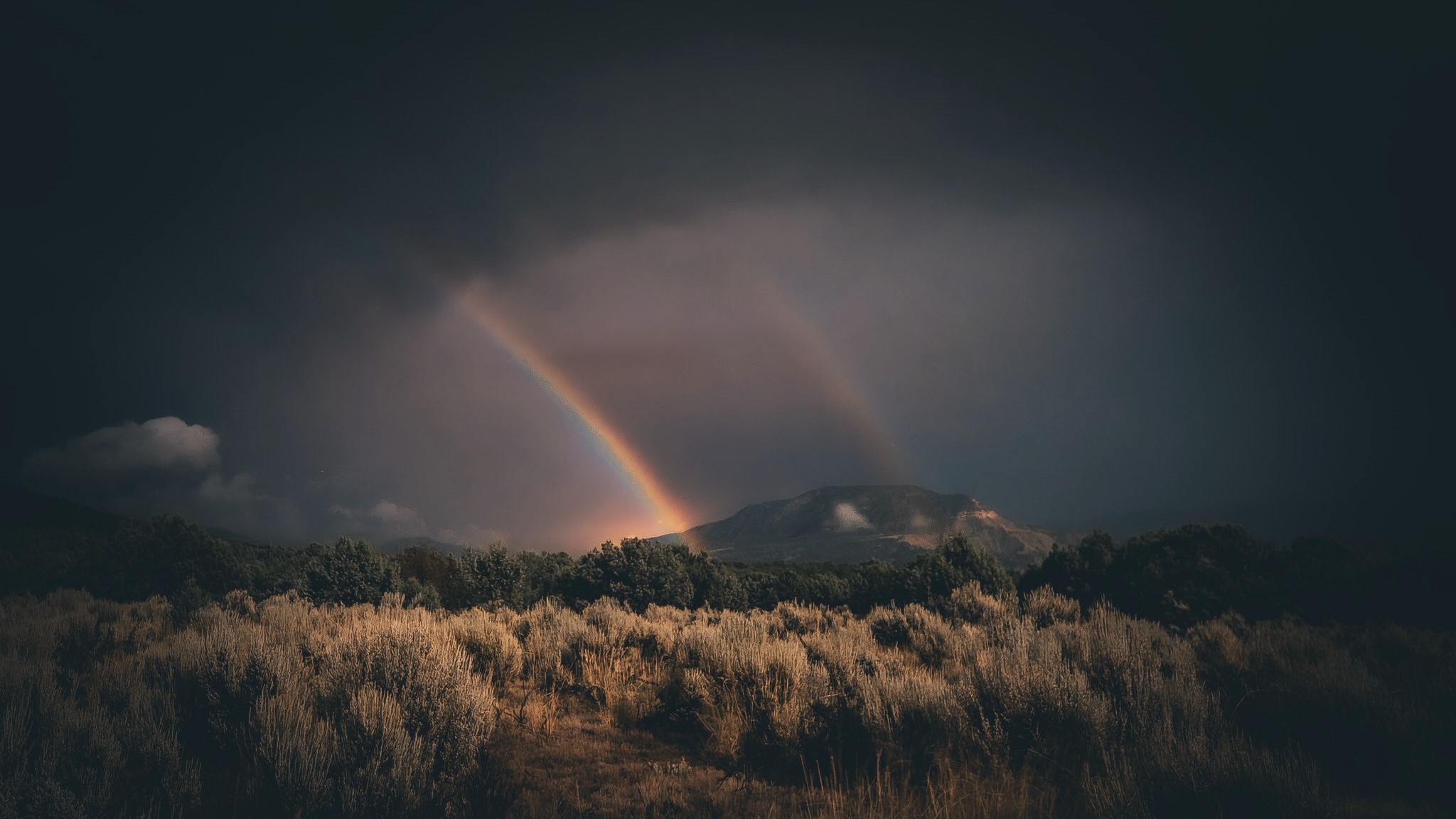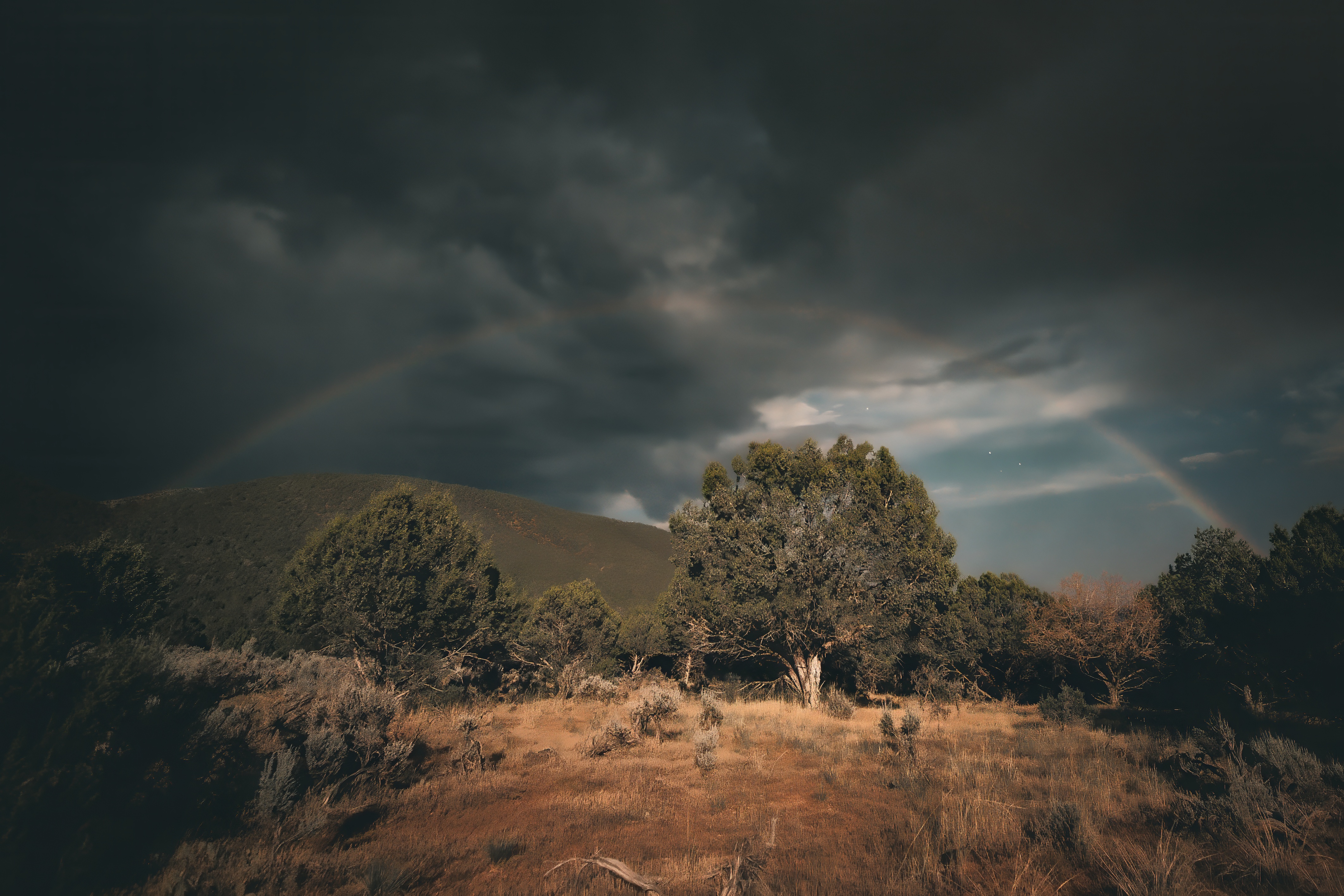
Most of us probably haven't seen a single moon rainbow, let alone two!
Photographer Aaron Watson captured this stunning image of a rare double "moonbow" around 2 a.m. on Aug. 18 from Colorado, U.S., just a day before the Supermoon Blue Moon.
"I woke to the sound of rain with the nearly full moon beaming through the window. The perfect recipe for a moonbow!" Watson told Space.com in an email.
Moonbows, like their daytime counterparts, rainbows, are created when water droplets refract light. During the day, the source of the light for rainbows is the sun and at night the source of light for moonbows is — yes you guessed it — the moon.
"I went outside for a look, and sure enough, there was a big white arc across the sky. It was a full bow to start but faded some by the time I was set up for the photos," Watson explained. "Upon closer inspection, it was fairly bright and colorful for a moonbow, though still pale and whiteish compared to a normal daytime rainbow,"

Though fainter than a regular rainbow, the scene still delighted Watson.
"I could see the bands representing the different shades clearly, they looked like different shades of white and gray, but I could also see faint colors as well when I looked closely," Watson continued.
And if that wasn't all, it turned out the moonbow wasn't alone.
"The main arc had a very faint companion off to its side. It was a wonderful sight to behold! It lasted for several minutes before fading away," Watson said.
Single moonbows, like single rainbows, are caused by a single reflection within the water droplet before it is refracted into the air whereas a double moonbow is caused by double reflections.
This was Watson's third time seeing a moonbow and on all three occasions he experienced similar conditions: passing nocturnal rain showers illuminated by a nearly full moon setting in the southwest.
Watson also shared with us a couple of photographs from another moonbow encounter back in July 2024. The photograph below shows a colorful moonbow against a background of stars.

"Both rain and moonlight are key ingredients, and another piece of the puzzle for spotting moonbows is that the moon needs to be relatively close to the horizon for the moonbow to appear," Watson said.

If the moon angle is low (typically no higher than 42 degrees above the horizon) then the angle between the moon, water droplets, and the observer's eye is ideal for the formation of a visible moonbow.
You can check out more of Watson's remarkable photographs on his website Skies Alive Photography, Facebook and Instagram (@skies.alive).
Editor's note: If you capture a stunning photo or video of the night sky and want to share them with Space.com for a possible story, send images, comments on the view and your location, as well as use permissions to spacephotos@space.com.







